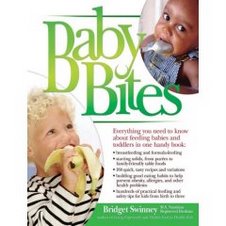Who would have thought that toys made for children could be a prime source of lead based paint? Unfortunatley, it's the sad truth since Mattel and other companies recently recalled toys that were found to have lead based paint in them. To find a list of all recalls in the U.S., go to http://cpsc.gov.
Why is everyone upset about the toy recall (and the recall of many other chemical laced products from China?) Toxins are much more dangerous to children because the effects are more profound during critical stages of development and growth that occur during pregnancy, infancy and early childhood. In general, the younger the child when exposed to a chemical like lead, the more harmful the effects.
Lead is a potent neurotoxin and can profoundly affect the development of the brain and nervous system. When children ingest small amounts of lead over time, as is often the case, the effects are not necessarily dramatic--the long term effects can include:
Reduced IQ
Slowed body growth
Hearing problems
Behavior or attention problems
Failure at school
Kidney damage
Short term symptoms include:
Irritability
Aggressive behavior
Low appetite and energy
Difficulty sleeping
Headaches
Reduced sensations
Loss of previous developmental skills (in young children)
Anemia
Constipation
Abdominal pain and cramping (usually the first sign of a high, toxic dose of lead poison)
Very high levels may cause vomiting, staggering gait, muscle weakness, seizures, or coma
WHAT ARE OTHER SOURCES OF LEAD THAT CHILDREN CAN BE EXPOSED TO?
Lead based paint in houses painted before 1978.
Lead soldered water pipes in older homes that can leach lead into drinking water.
Imported ceramic dishes
Dirt contaminted by lead from car exhaust or industrial waste (more common if you life near a highway, factory of industrial site.
From food or juice stored in crystal or pewter.
For more information about sources of lead, go to:
http://cpsc.gov
http://www.epa.gov/lead
WHY ARE CHILDREN MORE LIKELY TO INGEST LEAD?
The typical behavior of children is makes lead exposure more common. Children put everything in their mouths, including non food items, they are more likely to ingest lead and other environmental chemicals. Also, pound per pound, children eat more and drink more than adults--and they absorb more of everything that is in the food.
HOW MANY CHILDREN HAVE LEAD POISONING?
Unfortunately, exposure to lead is common in children--1 out of 20 preschoolers are thought to have lead poisoning.
WHAT SHOULD YOU DO IF YOU THINK YOUR CHILD HAS EXPOSED TO LEAD?
It's easy to find out for sure. Your health care provider can do a simple blood test; blood levels over 10 micrograms per deciliter is a concern. Chelation therapy can be started to help rid the body of extra lead.
Thursday, August 23, 2007
Subscribe to:
Comments (Atom)




